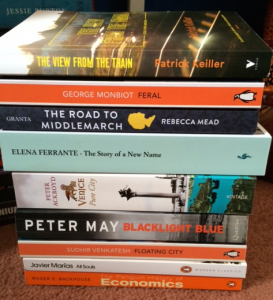Cormac Ó Gráda knows more than most people about famines, historical and modern, and his short book of essays, [amazon_link id=”0691165351″ target=”_blank” ]Eating People is Wrong[/amazon_link], is superb. It encapsulates in five chapters some key messages.
[amazon_image id=”0691165351″ link=”true” target=”_blank” size=”medium” ]Eating People Is Wrong, and Other Essays on Famine, Its Past, and Its Future[/amazon_image]
First, that cannibalism – ‘famine’s darkest secret’ – does occur, occasionally. Most often when it does, desperate people eat the bodies of those who have already died. Occasionally, people are murdered to be eaten. But the taboo is strong so cannibalism is rare even in terrible famines. Yet Ó Gráda concludes that we cannot assume ‘some silent cultural shift or civilizing process’ has made it a thing of the past.
The second chapter takes a careful look at the Bengal famine of 1943-44, and broadly agrees with [amazon_link id=”0198284632″ target=”_blank” ]Amartya Sen[/amazon_link]’s famous conclusion that it was a famine of policy rather than nature. “The famine was made inevitable by the authorities’ failure to recognize publicly that there was a shortfall, abd by the extra demands on food imposed by the war effort. The famine was the product of the wartime priorities of the ruling colonial elite.”
The third chapter interested me the most. It looks at several famines to test whether free markets make them worse (because food is shipped out of the famine region); or better (because higher prices induce higher food supplies); or worse because of information failures and uncertainty. Another, related issue is how well markets work in normal times – if they are not competitive normally, perhaps profiteering by middlemen and landowners is worse during a famine. The empirical work described in the chapter points to the importance of context: the response of markets to price signals does not function well in conflict zones – in Somalia, for example, the conflict segmented markets for grain. However, during other episodes, “markets worked more smoothly than might have been expected on the basis of a reading of qualitative and fictional accounts.” A key piece of evidence is the reduction in variation in food prices linked to greater integration of different regional markets due to increased flows. Movements in grain prices seem to have prompted supply responses and trade flows. Recent examples include Malawi and Niger in the 2000s. The same mechanism – greater integration, via mobile phones in these cases – has led to reduced variation in food prices in contexts ranging from Indian fisheries (Rob Jensen) and crops in Niger (Jenny Aker). This is a fascinating chapter. The important issue it doesn’t address is the strong sense so many people have that markets should not be allowed to operate at times when fairness matters more than efficiency – reflected in those ‘qualitative’ accounts. Wartime rationing is a clear example. I think it would help to make clear the efficiency/equity trade-off in these extreme contexts.
The fourth chapter is about China’s Great Famine. It is a critical account of some recent books, including Frank Dikötter’s [amazon_link id=”1408810034″ target=”_blank” ]Mao’s Great Famine[/amazon_link], which Ó Gráda regards as too ‘engage’ and insufficiently dispassionate. However, he does not dispute the huge scale or human costs. The chapter is really about the role of human agency in causing famine. It also raises the question of how at the time the famine was so invisible to the rest of the world, and also to many in China but outside the worst-affected areas.
Finally, the book discusses the problem of famine – rare, now, outside conflict zones – and that of hunger, not at all rare. It is critical of NGOs whose raison d’être was urgent famine relief for switching to their own self-perpetuation. They do not leave a country after a crisis, and the book points to the adverse effects imports of foodstuffs have on local supplies, once a food crisis has ended. The intrusion into the operation of local markets is in this kind of context very damaging. “Food aid in a crisis situation may avert famine; granted continuously in ‘normal’ times it may simply injure or destroy an already vulnerable domestic agricultural sector.” Non-famine malnutrition now causes far more death and disease than does famine. Eliminating hunger is proving far harder than eliminating (mostly, for now) famine.

